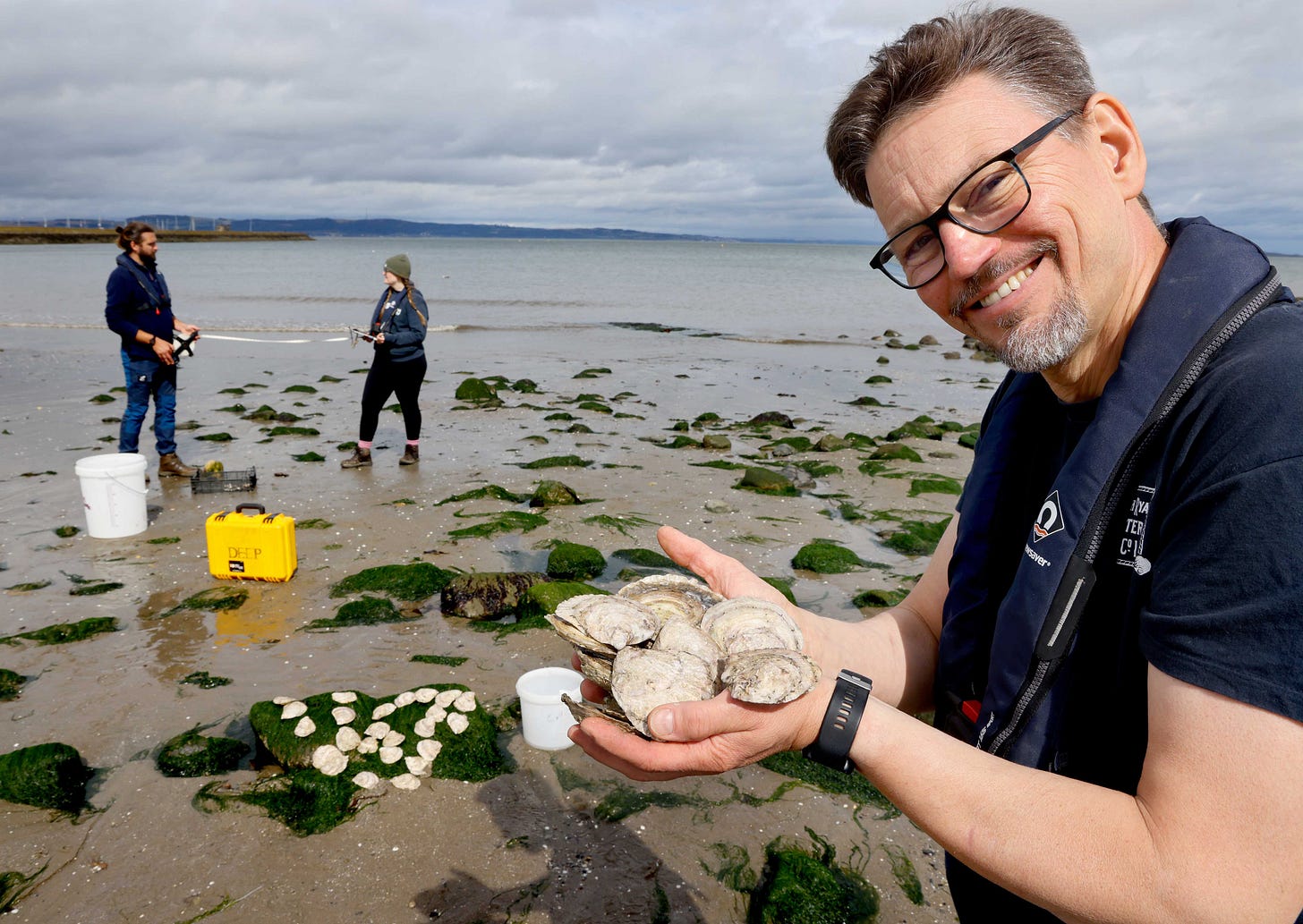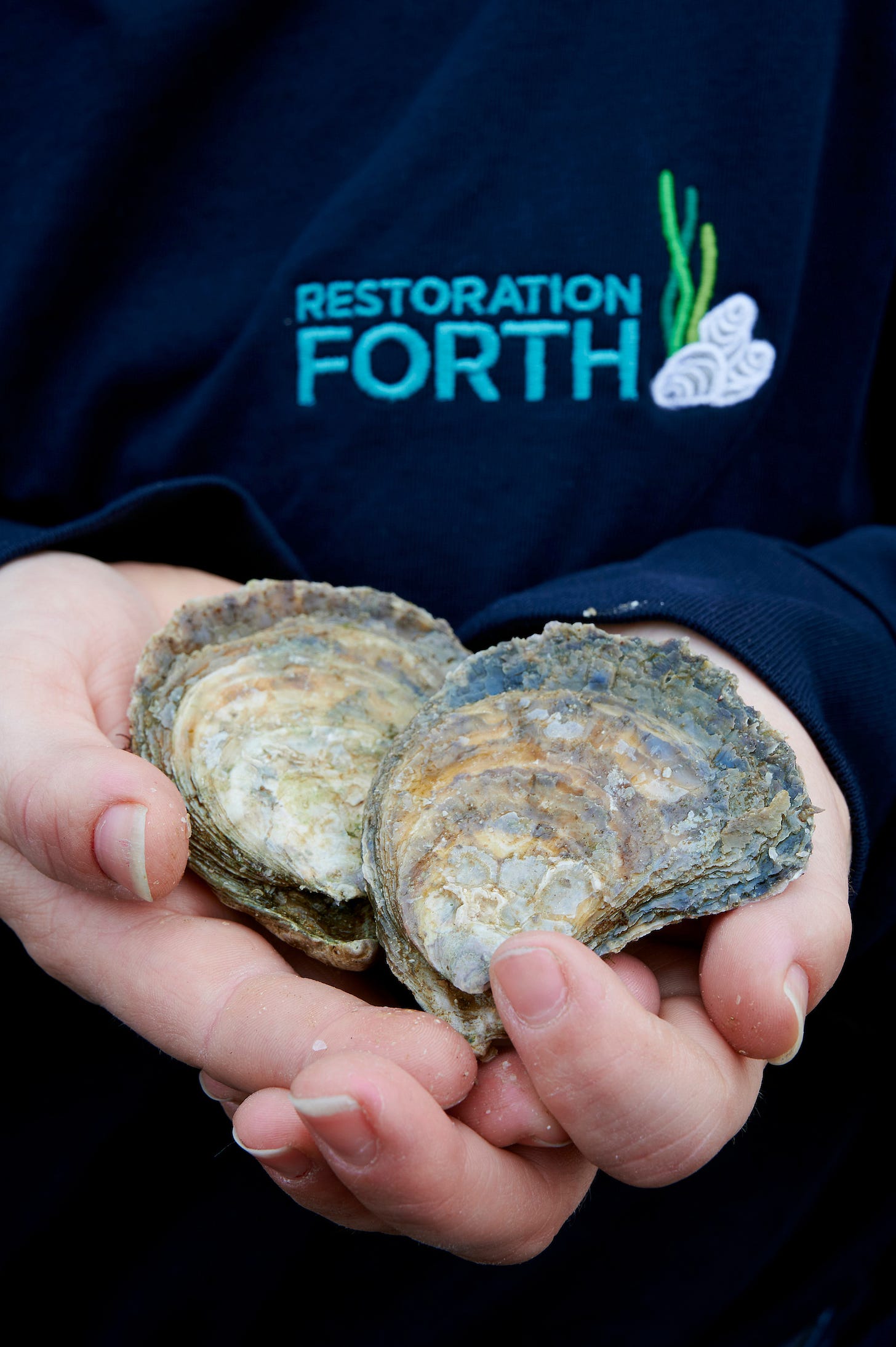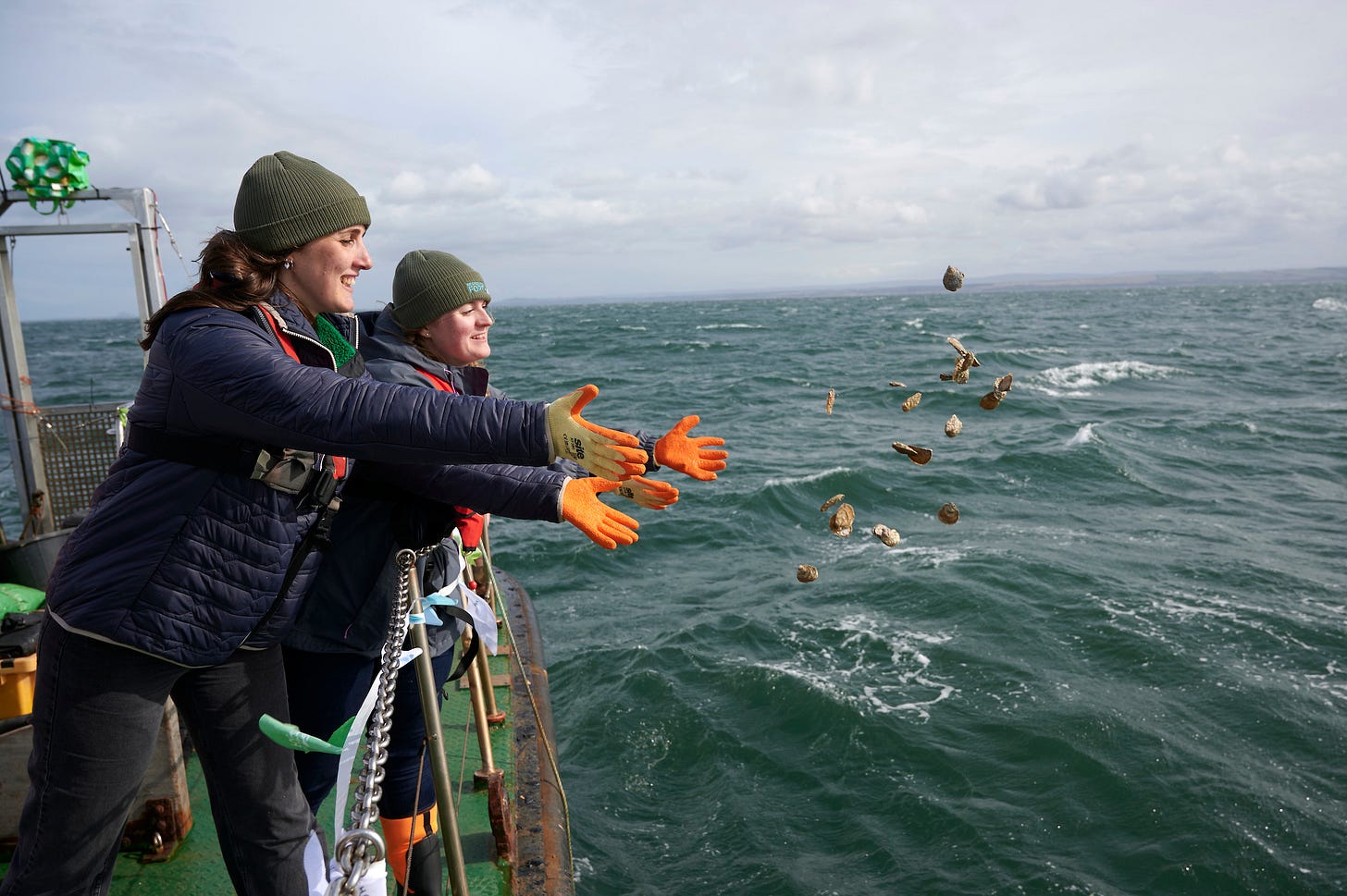How oysters are returning to the Forth after 100 years
A volunteer army is delivering one of the great ecology restoration stories of recent times
Imagine oyster beds in the Firth of Forth, so vast that they covered the same area as today’s 21st century Scottish Capital.
Two hundred years ago the Firth of Forth’s native oyster beds were amongst the most commercially important in Scotland and covered a vast area, 6 miles wide and 20 miles long, extending from the low watermark into the large shallow expanses of the Forth mostly up to a depth of 10 metres, writes Cat Thomson.
But within decades, by the start of the 1900s the oysters had all but vanished due to overfishing, with the bivalves being declared extinct in 1957. Professor Bill Sanderson, of Heriot-Watt University, explained simply: “We ate them all.
“If this had happened today this would have been an ecological catastrophe. The real tragedy was that we hadn't invented the concept of overfishing at that point. There was no such thing, so people continued catching larger and larger numbers.”
The expansion of the railway network also contributed to the oyster’s demise. This opened large profitable urban markets with customers who were hungry for oysters. Landing data from 1800s conservatively estimated that 30 million oysters were landed annually for over a decade. Sanderson added: “Those are mind boggling numbers.”
Local Superheroes
Professor Sanderson is involved in Restoration Forth, a multi-organisation project coordinated by World Wildlife Fund and involving Edinburgh Shoreline, Fife Coast & Countryside Trust, Heriot-Watt University, Marine Conservation Society, Project Seagrass, Royal Botanic Garden Edinburgh, Scottish Seabird Centre, The Ecology Centre and The Heart of Newhaven Community.
He said: “Native oysters are marine biological superheroes. They improve the water quality by filtering it, and they create spaces for other species improving biodiversity and they also store carbon. But they are also delicious.”
Naomi Kennon, Heriot-Watt research assistant, who works on Restoration Forth explained: “There has always been a local tradition for fishing for oysters in coastal communities along the Firth of Forth. The oyster bed in Edinburgh was divided up with individual communities each having access to different areas which they were quite territorial about.”
At one point, Newhaven harbour had around 50 fishing boats, while Prestonpans and Cockenzie had 40 boats each. In the summertime, fishermen would catch herring, and in winter they would catch oysters. The fishermen worked from small rowing boats and would sing as they worked. The story goes that they charmed the oysters out of the sea with their song.
Building in resilience
Restoration Forth project was set up in early 2022 aiming to increase and enhance biodiversity by reintroducing 30,000 native oysters and restoring 4 hectares of seagrass meadows to the Firth of Forth, to provide vital habitat for other species.
Both these species have undergone substantial declines with 90% of their habitat lost globally, so, “There's a very clear case for restoring them,” Sanderson says. To date, 20,000 oysters have already been reintroduced to the Forth, but it is not a simple case of just chucking them in the water and seeing what happens.”
The locations for deployment have been carefully chosen to ensure the best chance of success. Also, the oysters introduced as part of this project, have been sourced from two different locations, Little Loch Broom in Wester Ross, and Loch Ryan in Stranraer, to increase the variation and therefore resilience against disease in the population.
Kennon said: “One of the things we need to be careful about when we're transporting oysters from site to site is they have a lot of things growing on them. We don't want to accidentally transfer an invasive species from one water body to another, so we physically clean them. That's very labour intensive.”
Getting involved
This is just one of the citizen science projects anyone can get involved with. The biosecurity days which are held at Heriot-Watt University see volunteers roll up their sleeves and clean each individual oyster, using a table knife and a hand scrubber, to get them in pristine condition to be deployed in their new home.
Heriot-Watt University also runs oyster stringing workshops, where members of the public, can volunteer to attach oysters to ropes before they are released. “We pin strings of oysters into the seabed, so we can track individuals. Are they alive? Are they growing?” So far, the signs have been good, Kennon adds, “but we still have to get them through their first winter storms.”
Marine Conservation Society and The Royal Botanical Gardens Edinburgh help organise and coordinate the volunteer involvement and oyster events for Restoration Forth. To get involved in these and other opportunities with the project visit https://www.wwf.org.uk/scotland/restoration-forth#events
The whole project aims to empower communities around the Firth of Forth to become champions for their local environment. One such project at The Heart of Newhaven called on the talents of local artist Natasha Russell - a former Edinburgh College of Art graduate - who was commissioned to paint an oyster-themed mural.
Russell explained: “It took two weeks to paint, but it involved talking to people of all ages, and that felt important, as The Heart of Newhaven’s focus is very intergenerational. I worked with many people including some Victoria Primary school pupils, who drew some amazing underwater designs that helped inform the final design of the piece.”
The mural cleverly blends Newhaven’s oyster history, with the natural environment, and modern wild swimmers, as well as depicting the oyster restoration project itself.
At the official mural unveiling in September, Judy Crabb, the chair of The Heart of Newhaven Community hub explained why this project is so special: “For generations, oysters have been important to this area. They're not here now, but as we've seen with the unveiling of this mural, both young and old have a real connection to them. We can learn from the past depletion of the oysters and now we have an opportunity to make that better.”
At the centre of the Restoration Forth project is community involvement. Prof Sanderson said: “It takes an incredible effort between many communities and volunteers to make it all happen. One of the key objectives was to impart as much knowledge as possible and enthuse as many people as possible to get involved, as it requires a very significant community of actors to make it work.”
All hands to the pumps
He passionately believes this is the best way to make the project successful. “When you've got the community behind it and when people understand and value things, then they're far more likely to try and conserve them. Also, from a pragmatic point of view the scale of the restoration required in the Firth of Forth is so large that it needs all hands to the pumps.”
There is clearly an appetite for these oyster-based activities as most events are fully booked, with more than 200 people volunteering.
Currently, under the surface of the Forth, you will find a very homogeneous marine environment compared to the 1800s. But things may look brighter in years to come, said Kennon: “We expect to see things like butterfish, pipe fish, feather stars, hermit crabs, basically a whole host of different organisms that like to live in the oyster shells. Both the dead and alive oyster shells, create a beautiful complex habitat with lots of little nooks and crannies, that provide shelter for baby fish and juveniles to grow up, away from predators. The oyster shell surface is used for egg laying, and for things like seaweeds, barnacles and keelworms to attach to. It creates a complex habitat that's really biodiverse.”
Although the end goal is not to have oysters to eat, Sanderson explains one of the other major benefits. “We could have a system which is far more productive, far more biodiverse, and provides more positives than we've got. It also enhances water quality because oysters filter the water. The figure widely used is 200 litres per day for each oyster.”
Currently, the water quality in Forth is on the up, although he admits “it is not the cleanest. I like to think that one of the consequences of restoring oysters in significant numbers might be that some of these parts of the Firth of Forth, where people wild swim, or paddle board, will be clearer, so you will be able to see your feet. When we've got to the point where oysters are back again in significant number, it'll be that profound - at a system level.”
November will see the next oyster deployment and, on the boat, along with the crew, and the Heriot-Watt science team, you’ll find a cross-section of Restoration Forth partners and community volunteers.
Last word to Professor Sanderson as he describes the feeling of returning the oysters to the Forth. “You see some people get quite emotional about it. It's quite an act of hope, in a sea of negativity about environmental issues, it is just amazing to do something which you know is going to make a positive difference.”





